Course objectives: Digital imaging has emerged
as the dominant technology for acquiring and working with images,
whether on the web, with a still camera, or video. Here the issues
associated with extracting useful information from digital images will
be introduced from an artificial intelligence perspective. These
include image data structures, preprocessing for noise reduction and
feature enhancement, edge detection, segmentation, object recognition,
scene graphs, graph matching, top-down and bottom-up
image analysis. At the end of the course, students should be
knowledgable concerning the major steps and algorithms in the
end-to-end computer vision process beginning with image acquisition and
ending with a machine-produced description of the relevant scene
semantics. Students should also have a working knowledge of the
Matlab© computing tools for image analysis.
Course syllabus: 1. Introduction (1/2 wk)
2. Digital images (1 wk)
3. Pre-processing of digital
images (1 2/3 wk)
4. Segmentation (1 2/3 wk)
5. Mathematical morphology (2 2/3
wk)
6. Shape and shape description (1
2/3 wk)
7. Object recognition (2 2/3 wk)
8. Image semantic understanding
(1 1/3 wk)
Registration:
CSE
473:
473L
-
lecture
MWF
3:00-
3:50PM
112
Norton
471861:
473R1-
recitation
W
4:00-
4:50PM
6
Clemens
461994: 473R2 -
recitation
R 3:00- 3:50PM
110 Baldy
343026: 473R3 -
recitation F 10:00-
10:50AM 210 NSC
CSE 573:
573L
-
lecture
MWF
3:00-
3:50PM
112
Norton
163266: 573R1 -
recitation W
4:00- 4:50PM 6 Clemens
111140: 573R2 -
recitation
R 3:00- 3:50PM
110 Baldy
212802: 573R3 -
recitation F 10:00-
10:50AM 210 NSC
Prerequisites: CSE473: Senior standing in CSE
Dept'al major or PI; CSE573: CSE305 or PI.
Course director: Peter
Scott, Associate Professor Dept. Computer Science and
Engineering, Rm. 136 Bell
Hall, 645-3187, mailto:peter@buffalo.edu. Office hours MW
10:30-11:30AM, F 11:00AM-12:00PM, 136 Bell Hall.
TAs: Manavender Reddy mailto:mrm42@buffalo.edu. Office hrs
Tues 11:00-11:50am and Thurs
4:00-4:50pm in UB Commons Suite 202, The
Center for Unified Biometrics and Sensors (CUBS), Room 33. Danjun Pu:
mailto:danjunpu@buffalo.edu. Office hrs
Tues 10:00-10:50am and Fri 2:00-2:50pm in UB Commons Suite 202, The
Center for Unified Biometrics and Sensors (CUBS), Room 7.
Required textbook: Milan Sonka, Vaclav Hlavac and Roger
Boyle, "Image Processing, Analysis, and Machine Vision," Second or
Third Editions, Brooks/Cole Publishing Company, ISBN
053495393X (2nd edition), ISBN 049508252X (3rd edition).
Required work: Four problem sets, in-class midterm
and final exams, project. Exams 50 minute closed book, notes. Problem
sets (done individually) require use of
the Matlab application,
scripting language and the Matlab Image Processing Toolbox. Matlab is
mounted
on the CSE, ENG and CIT UNIX systems and available to all registered
students.
No prior knowledge of Matlab is assumed. For project (done
collaboratively in a project group), choice of
language
and development environment is up to each project group.
Grading: 25% each midterm, final, problem set
average,
project.
Listserv newsgroup: sunyab.cse.573.
Academic integrity: The value of our courses, grades,
degrees and research findings are dependent upon adherence to standards
of ethical conduct. Plagiarism and inappropriate collaboration
will not be tolerated. In this course we will adhere to the CSE
departmental
standard for academic integrity. We quote here this standard as it
applies to
coding assignments and projects:
"The
following
statement
further
describes
the
specific
application
of
these
general
principles
to
a
common
context
in the CSE Department
environment, the production of source code for project and homework
assignments. It should be thoroughly understood before
undertaking any cooperative activities or using any other sources in
such contexts.
All
academic
work
must
be
your
own.
Plagiarism,
defined
as
copying
or
receiving
materials
from
a
source
or
sources and
submitting this material as one's own without acknowledging the
particular debts to the
source (quotations, paraphrases, basic
ideas),
or otherwise representing the work of another as one's own, is never
allowed. Collaboration, usually evidenced by unjustifiable
similarity, is never permitted in individual assignments. Any submitted
academic work may be subject to screening by software programs designed
to detect evidence of plagiarism or collaboration.
It
is
your
responsibility
to
maintain
the
security
of
your
computer
accounts
and
your
written
work.
Do
not
share
passwords
with
anyone,
nor
write
your
password
down
where
it
may
be
seen
by
others.
Do
not
change
permissions
to allow others to read your course directories and files. Do
not walk away from a workstation without logging out. These are
your responsibilities. In groups that collaborate inappropriately, it
may
be impossible to determine who has offered work to others in the group,
who has received work, and who may have inadvertently made their work
available
to the others by failure to maintain adequate personal security In such
cases, all will be held equally liable. "
Additional information on University-wide policies and
procedures is
contained in the UB
Academic
Grievance
Policy , and the UB
Academic
Integrity
Statement .
Projects: Each student registered
for CSE473 or CSE573 must complete a project. Project groups will
be announced in lecture, and projects assigned to each
group at that time. Students within a project group are expected to
work collaboratively and submit a single project report. The same
project topic will be assigned to two groups, but please note that no
collaboration with students outside your announced project group is
permitted.
A project report of 5-10 pages plus appendices is due
at the time the final exam is scheduled. The report will constitute the
full documentation of your
work,
no executable code need be submitted or
demonstrations done. The report must be submitted electronically
as a pdf document, Microsoft Word or text document, no hard copy will
be submitted. Your report should contain a concise problem
statement, clear description of the ideas and code you developed,
rationale for and description of the data and tests you used to
determine its performance, a clear statement of the results of the
tests, and discussion of these results. You should also include a
clean copy of any source code you wrote as an appendix to your report.
This source
code should be commented to help a reader understand its logic.
Optionally, your report may also contain other elements such as
tutorial discussion,
literature citations, recommendations for future investigation, etc.
But
a maximum length of 10 typed pages is stipulated, so be concise.
You
may work in any language and development environment you choose, for
instance
Borland C++ on a PC, Java on the CSE UNIX network, or Matlab
scripting language on the CSE, SEAS or CIT UNIX networks. Please read
your project
description carefully and make sure you understand the task that is
being
assigned before beginning your work.
In addition, keep in mind that each project report will be uploaded to
a web service which searches for documents on the web containing
significant length passages with very similar wording or very similar
source code. The program is smart enough to find duplicate sections
even with minor changes such as white space or variable name changes in
source code. This check is done not with the goal of catching instances
of plagiarism, but rather to discourage in advance anyone who might be
tempted to try cut-pasting material from other sources into their
report. In the event this warning fails, however, and plagiarism is
discovered, very serious penalties will follow. I hope and trust that
will not be necessary, it is not worth risking your reputation and your
future.
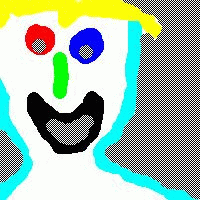
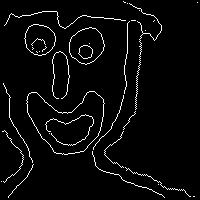
![]() Course director Prof. Peter Scott,
Department of Computer Science and Engineering, University at Buffalo
Course director Prof. Peter Scott,
Department of Computer Science and Engineering, University at Buffalo ![]() TA:
Manavender
Reddy
TA:
Manavender
Reddy![]() Problem sets, solutions, homework grades
Problem sets, solutions, homework grades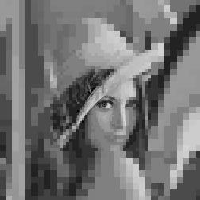
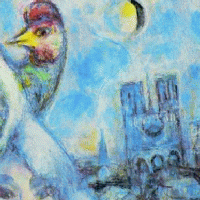
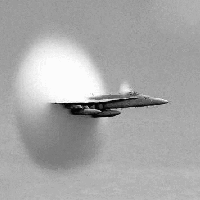

![]() Newsgroup
sunyab.cse.573
Newsgroup
sunyab.cse.573 ![]() Midterm exam: Fall
2007 midterm and solutions , Fall
2008
midterm and solutions, Spring
2010
midterm and solutions, Fall 2010 midterm exam and solutions.
Midterm exam: Fall
2007 midterm and solutions , Fall
2008
midterm and solutions, Spring
2010
midterm and solutions, Fall 2010 midterm exam and solutions. ![]() Final exam: Fall
2007
final
exam
and
solutions, Fall 2008 final exam and solutions,
Spring 2010 final exam and solutions,
Fall 2010 final exam and solutions.
Final exam: Fall
2007
final
exam
and
solutions, Fall 2008 final exam and solutions,
Spring 2010 final exam and solutions,
Fall 2010 final exam and solutions.